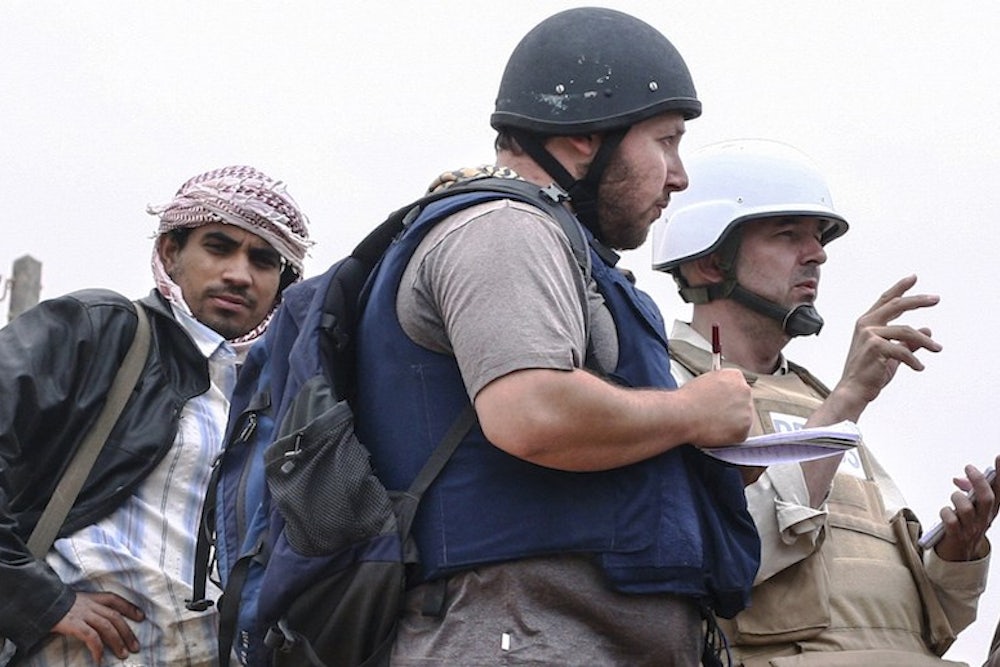The other day, I was sitting on some couch, discussing the videotaped beheadings of journalists James Foley and Daniel Pearl with an old friend and colleague. She had watched the videos. I had not, but I couldn't help but ask, How long must a beheading with a knife take? How excruciatingly painful must it be?
A second friend and colleague begged us to stop. As a stringer for a prominent American paper, he had covered the ethnic cleansing in Kyrgyzstan, been beaten up by Lukashenko’s cops in Belarus, and been shot at in the 2008 war in Georgia. For a while, he thought the paper was going to send him to Afghanistan, where yet another one of our colleagues had spent years (and another year, afterward, recuperating from the trauma). “What terrifies me the most about these videos,” he said, “is that it could be any one of us.”
Not 24 hours later, we learned that ISIS had beheaded another American journalist, Steven Joel Sotloff, a freelancer for TIME. Sotloff was 31. I can remember a time when that number would have seemed old, but today I am 31 myself. I never met him, and there is much that separates our careers—his foreign reporting involved far more risk than mine—but I can’t help wondering whether, like me, he felt like he was just getting started at 31, that he still had so much time to do the things he wanted to do, decades left to become the accomplished, bold-faced journalist he wanted to be.
The years I spent in Moscow as a freelancer—and which my friend spent there as a stringer for that paper—were a down payment for the professional bounty of those misty future decades. We plunged into the story of a foreign land, tangling ourselves in its textures and nuances, both for the love of the story and for the hope that, one day, someone would hire us—that our work in Russia would lead to other interesting work, maybe with benefits and a stable salary, maybe even back home, where we all half-wanted to return. It's possible, even likely, that Steven Sotloff had the same hopes as he set off to cover a hot and far-more-dangerous story.
Tom Peter, who was also briefly kidnapped in Syria, wrote here about the increasingly mistrustful and politicized readers back home who make the risks not worth taking. But, if we’re honest with ourselves, we journalists are not just doing it to inform the reader. We’re also taking these risks for ourselves, making the calculation that, stringing and freelancing in places where papers and magazines are either too scared or too cheap to send permanent correspondents, going to iffy places and often for a pittance, someone will notice our labors and reward us with more work, and maybe even a job. It is a bright and risky way to launch a career. It's also a way to discover that, even if it’s hard to break in, if this is what journalism is, you don’t want to do anything else for the rest of your life.
We lucked out and did okay. I’m writing this from a staff job at The New Republic in Washington, and my friend was eventually hired and brought home by that newspaper. But the gambit never paid off for Sotloff. His beheading will be, for most anyone who hears his name, the sum total of his career. That is so immensely crushing and disappointing. It's also, for us journalists, a reminder of the gambit's downside, the shortness and slipperiness of the future, and the utter fragility of our plans.
